'Call for action' is a series of sculptural pieces that should be activated through physical interaction and instinctive expression of a movement or gesture.
With the 'call for action' project I'm exploring the tension between constraints and freedom, between strength and vulnerability. Our reality is defined by rules, traditions and borders, but all these can also trigger spontaneous and unexpected reactions.
The pieces are inspired by colourful plastic hoop bracelets from the 90's that I used to find in my mothers jewellery box, they are a metaphor for mefor the epoch of the golden age in the late Soviet Union, when decades of social constraints clashedwith the unleashed new freedoms.




People are invited to interact with these forms, to try them on and to act against constraints of the object by using their own bodies as a tool. They should adapt to the shape, escape the movement restricting structure or surrender and hold still.
They may not fit everyone or be comfortable, I'm offering the wearer the accessories to experience the power of physical bound and to feel the importance of movement without confinement.
This project consists of a set of colourful body sculptures that are calling for performative action: to be worn and involved with semi-restrained movements, evoking a state of flux and struggle.
With every new position on the human body they can generate new movement reactions and positions.
They may not fit everyone or be comfortable, I'm offering the wearer the accessories to experience the power of physical bound and to feel the importance of movement without confinement.
This project consists of a set of colourful body sculptures that are calling for performative action: to be worn and involved with semi-restrained movements, evoking a state of flux and struggle.
With every new position on the human body they can generate new movement reactions and positions.
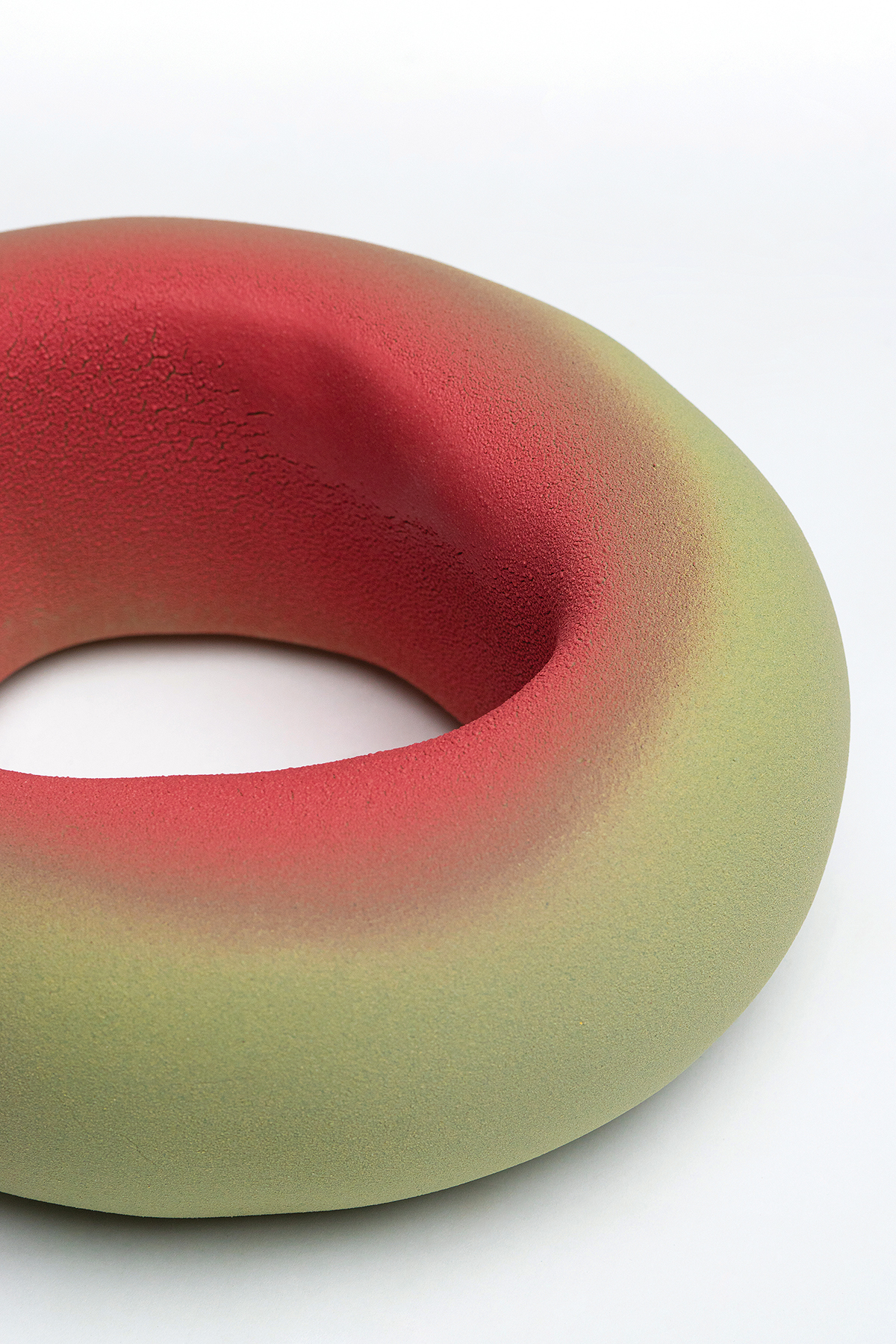




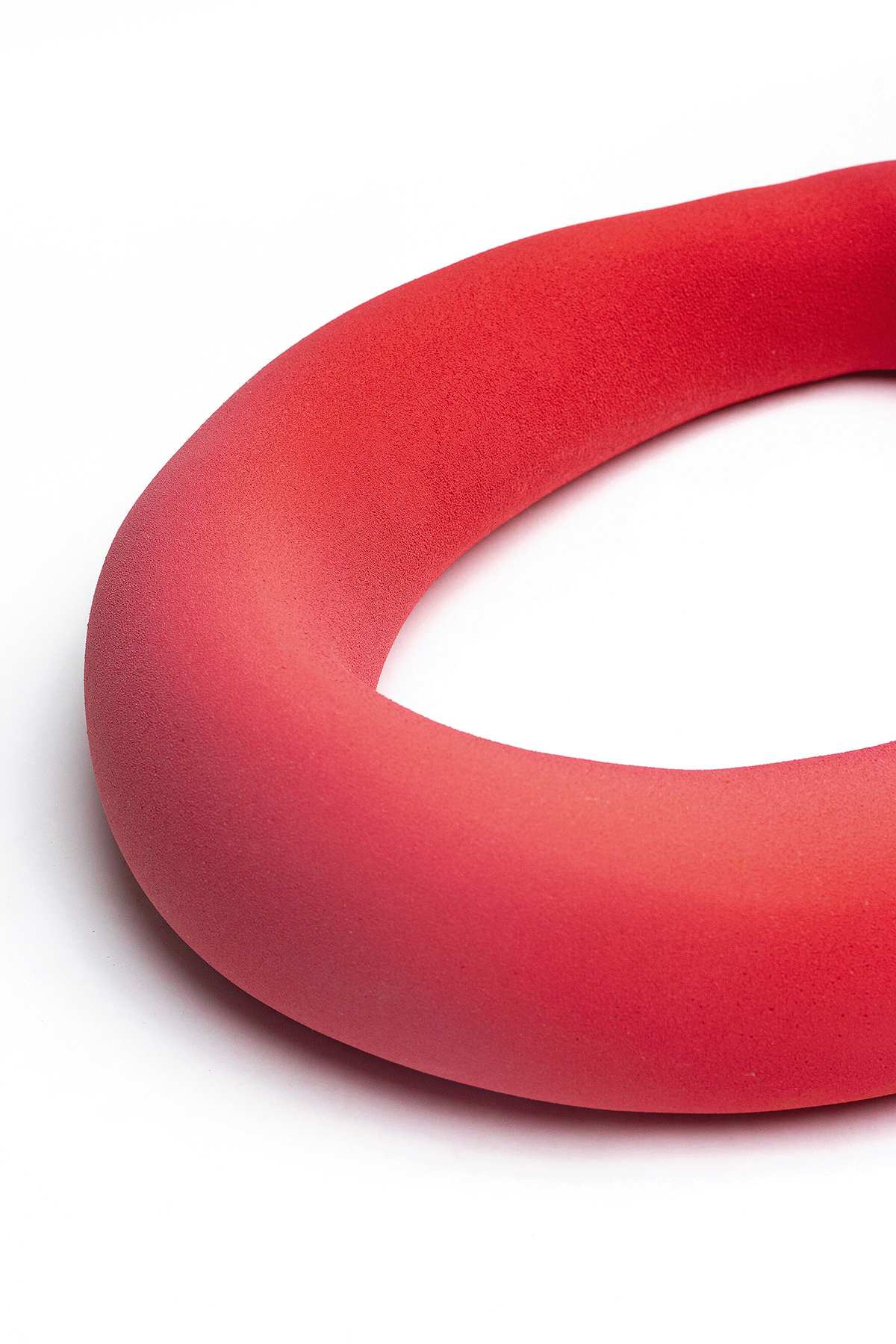

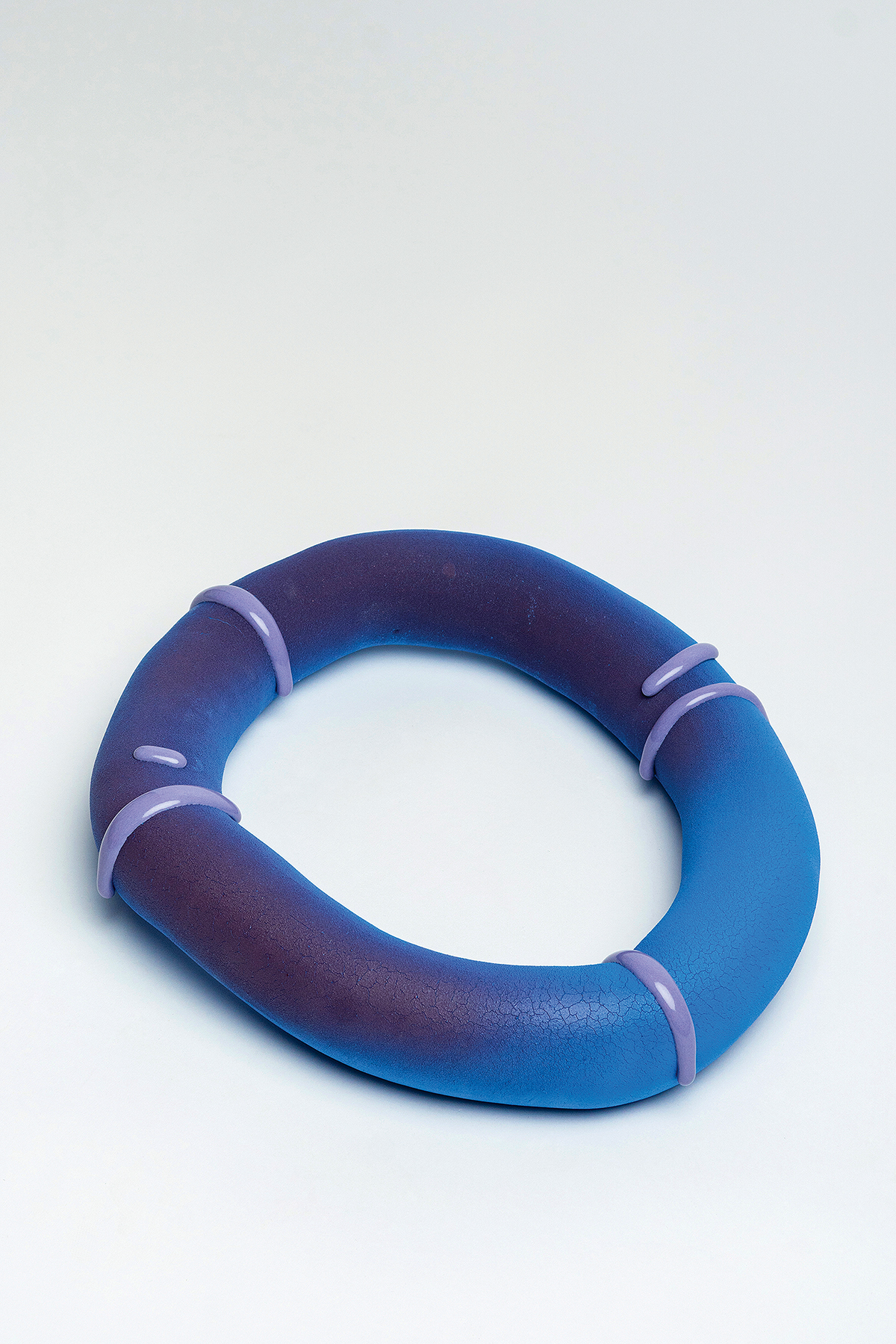

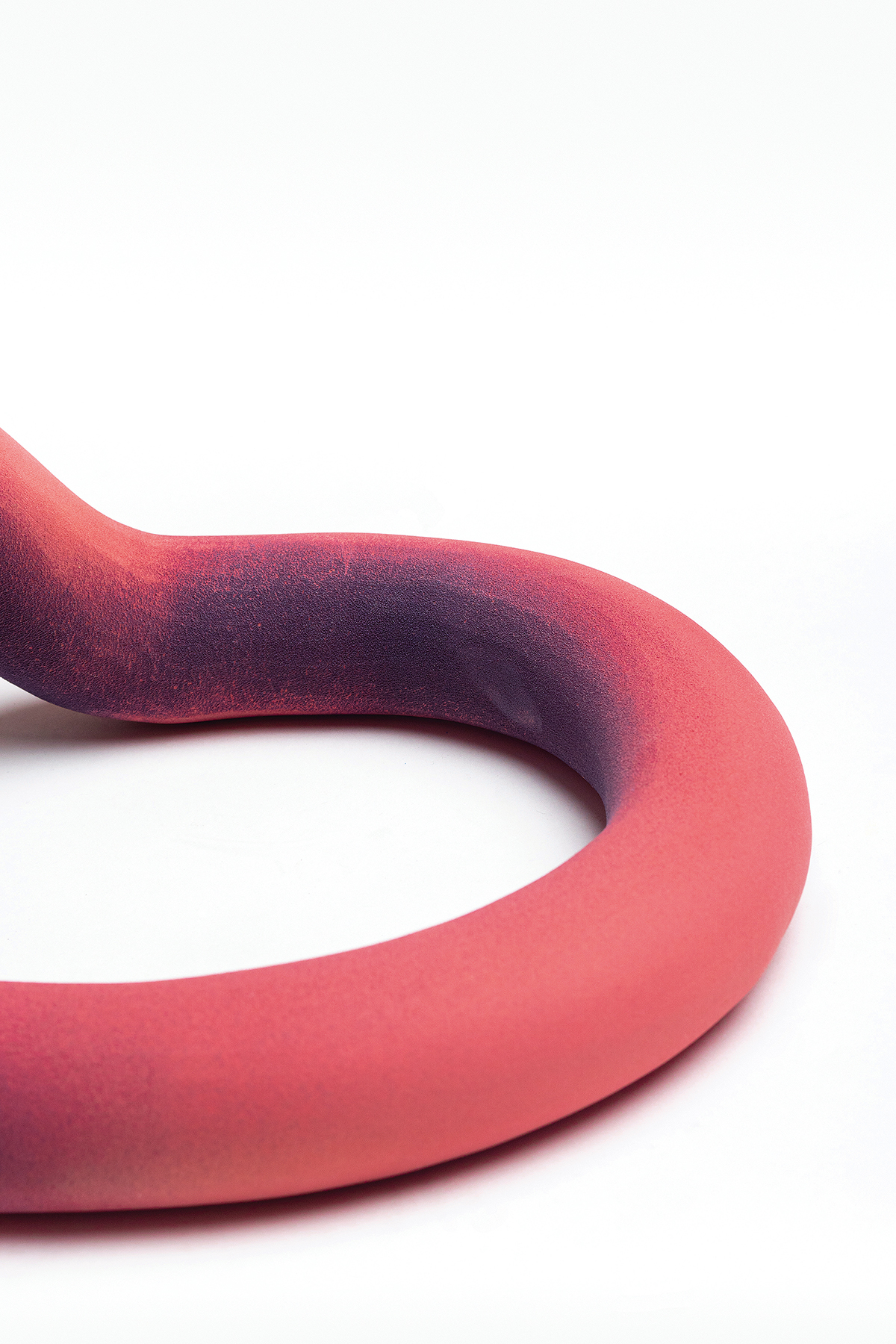





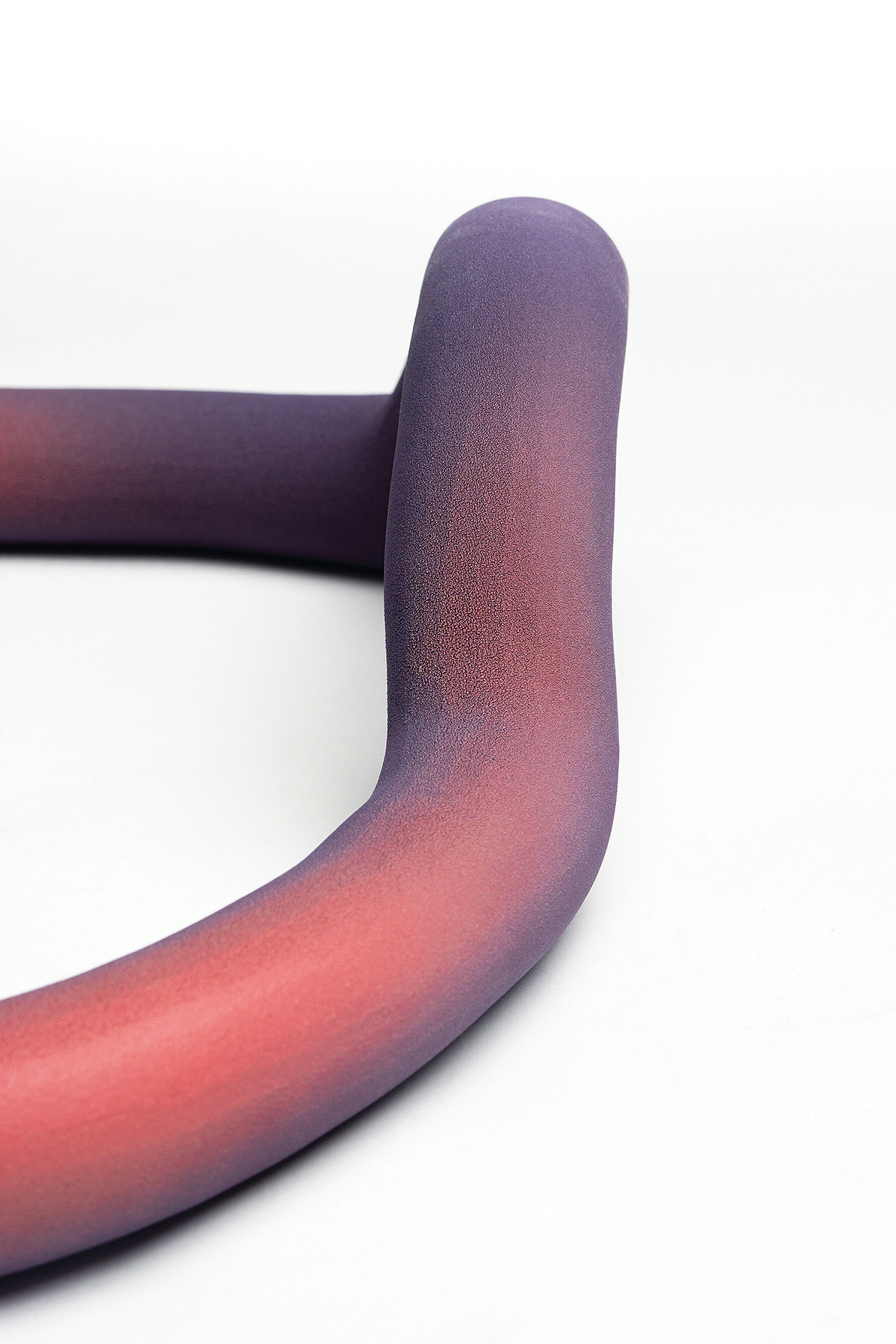


Movement research with contemporary dancer Stella Perniceni
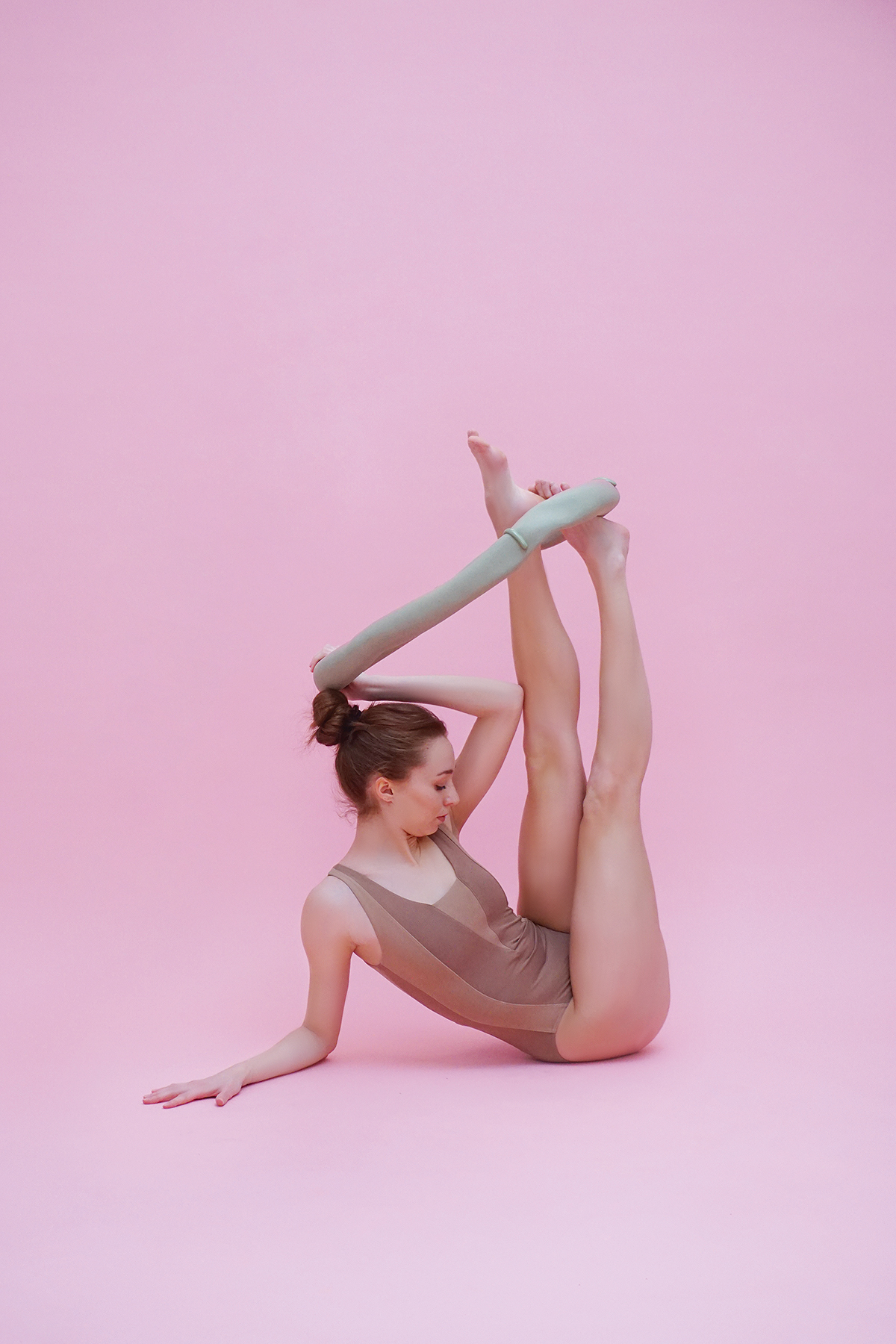





Urdido
Sculpting Workshop
Summer 2019
Vases each H 90 cm
Sculpting Workshop
Summer 2019
Vases each H 90 cm
What I love the most about ceramics is that it's a never-ending learning process. I really enjoy taking part in master classes or workshops and learning different techniques used by ceramicists around the world. In summer 2019 I attended Urdido sculpting workshop and learned one of the most ancient hand-building methods still used in many parts of the world, mainly by women. In just one week I was able to build two 1m high vessels. They were later fired in the wooden kiln.
With this primitive technique you can make large jars without tools and a throwing wheel. You elevate the piece by forming the ball of clay directly with your fingers into a coil and immediately pressing it into the wall. It's a complex process that requires high concentration by doing several things simultaneosly — dancing around your piece in a circle backwards, forming the coils while attaching them, shaping the vessel and taking care of the quick growth so you prevent the walls from collapsing while continuing working.



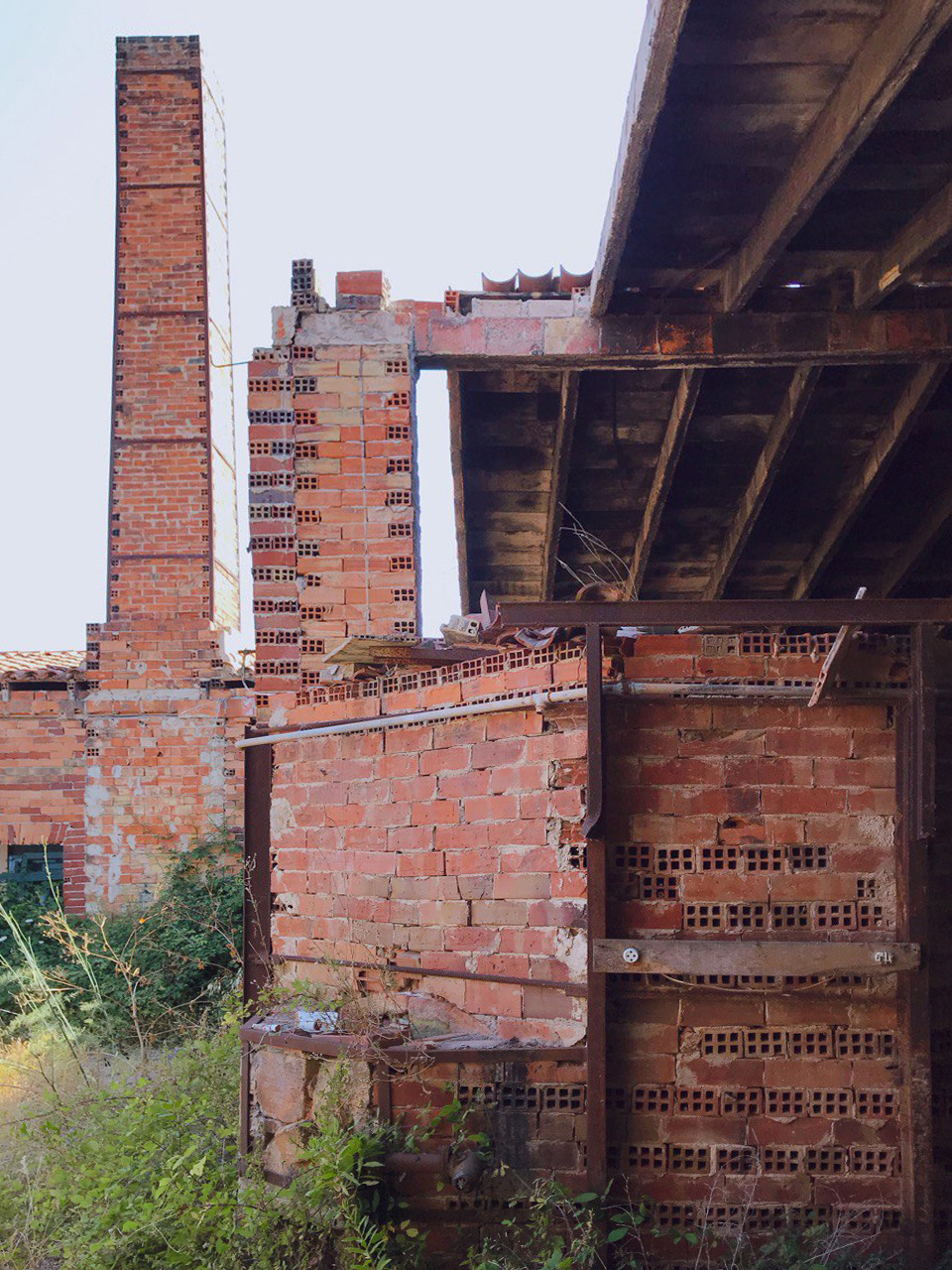
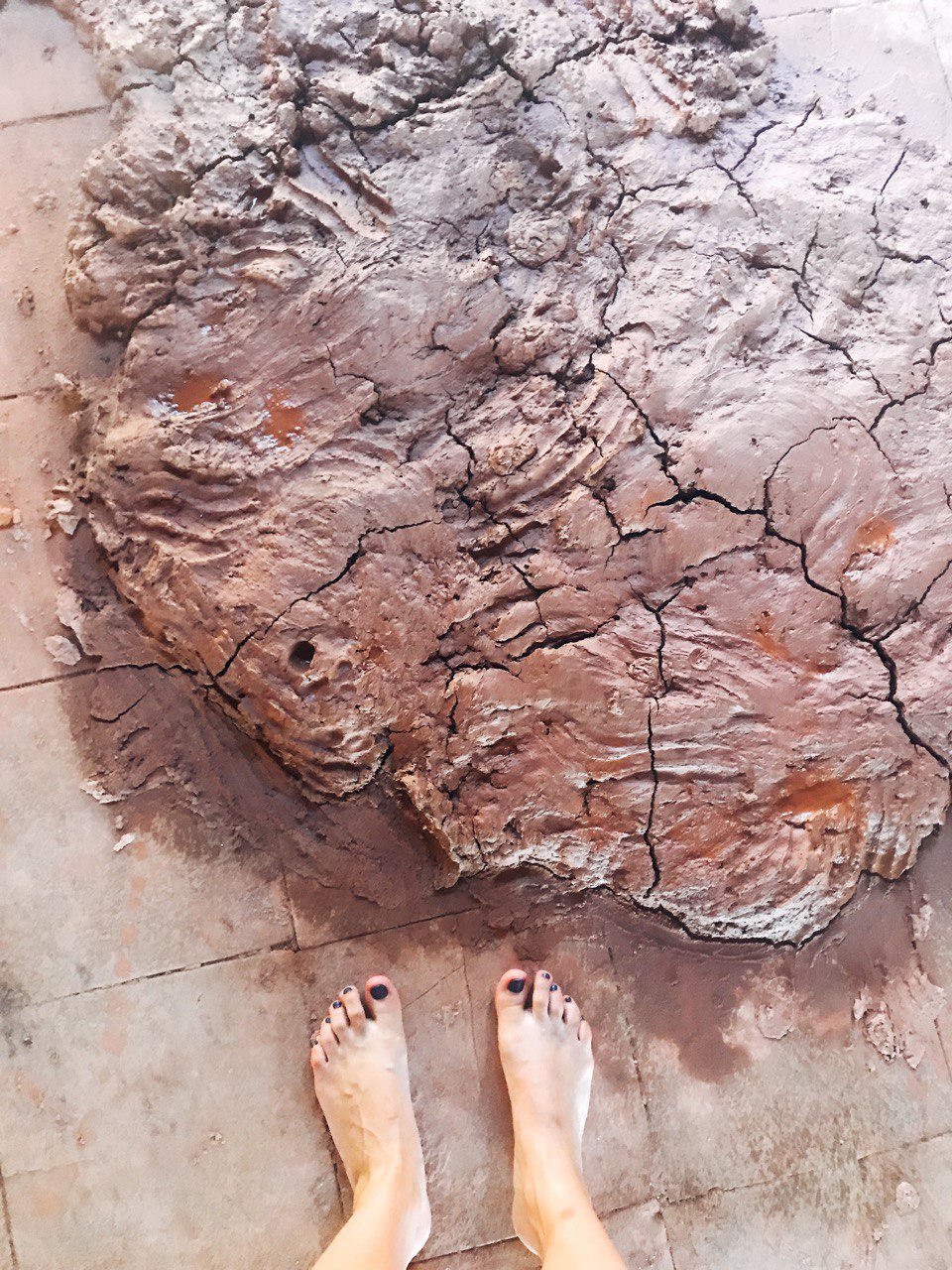
It's essential to use very soft clay with high grog percentage. For this project we were lucky to have a lot of terracotta from Mallorca and it was an additional joy to prepare our clay.

Being an artist has turned me into a researcher: While exploring ceramic art, I came across several puzzling foundational paradigms rooted in the basics of pottery-making and female identity. On one hand, archeologists and historians attribute pottery and working with clay in nearly all civilizations as a feminine craft. On the other hand, however, if we delve into the roots of the historical chronicles of ceramic art, we find that all the documented, signed pottery in the world museum collections has been produced by male artists. Female-produced ceramics are considered to have little or no esthetic value and are often labeled as “anonymous” or “No Name”.



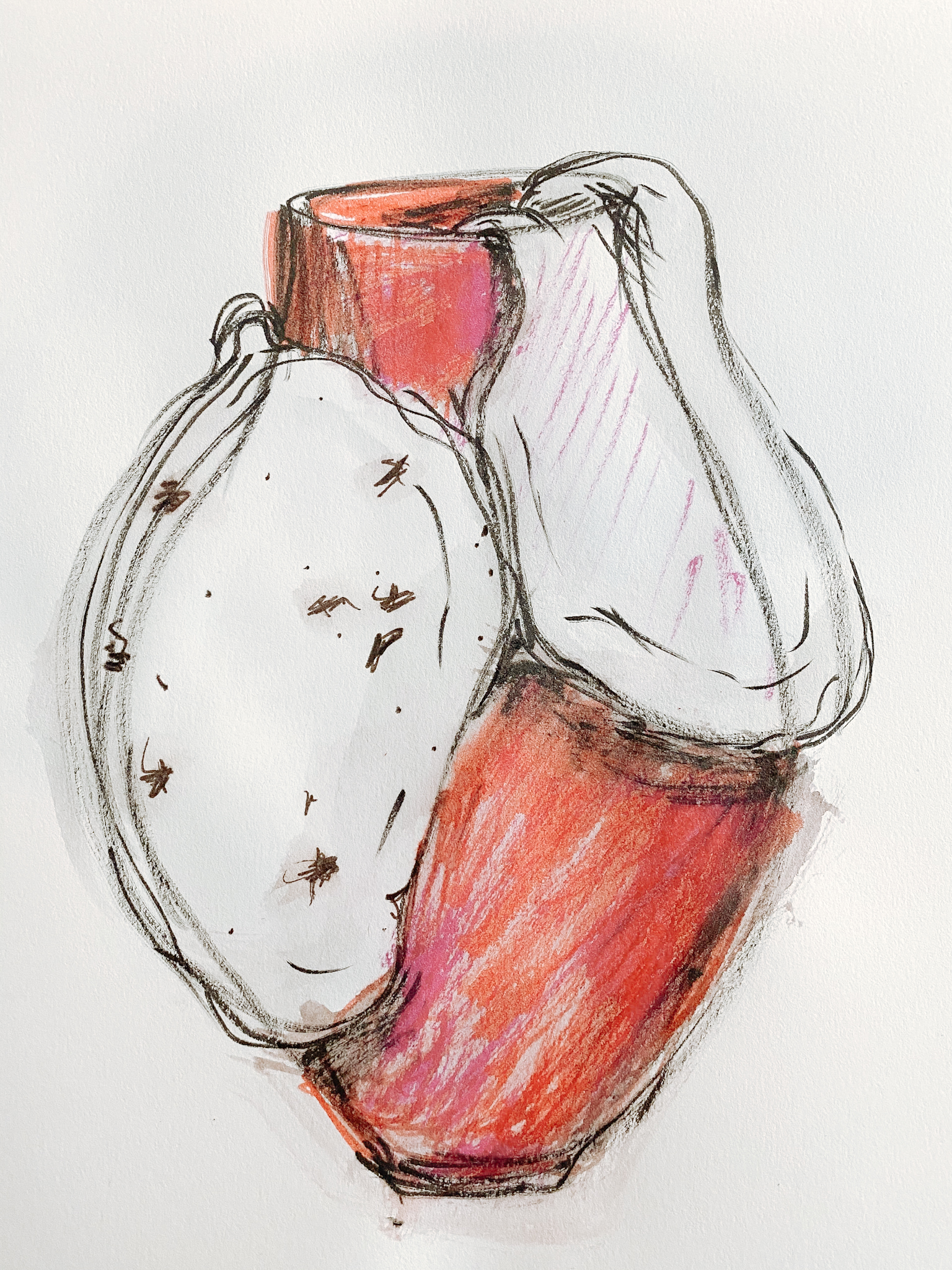

In my No Name project I deliberately use simple archaic silhouettes of the ancient vessels, linking historical traditions to the modern role of women in contemporary society. I combine wheel throwing and “urdido” sculpting, one of the most ancient methods still used in many parts of the world, mainly by women.
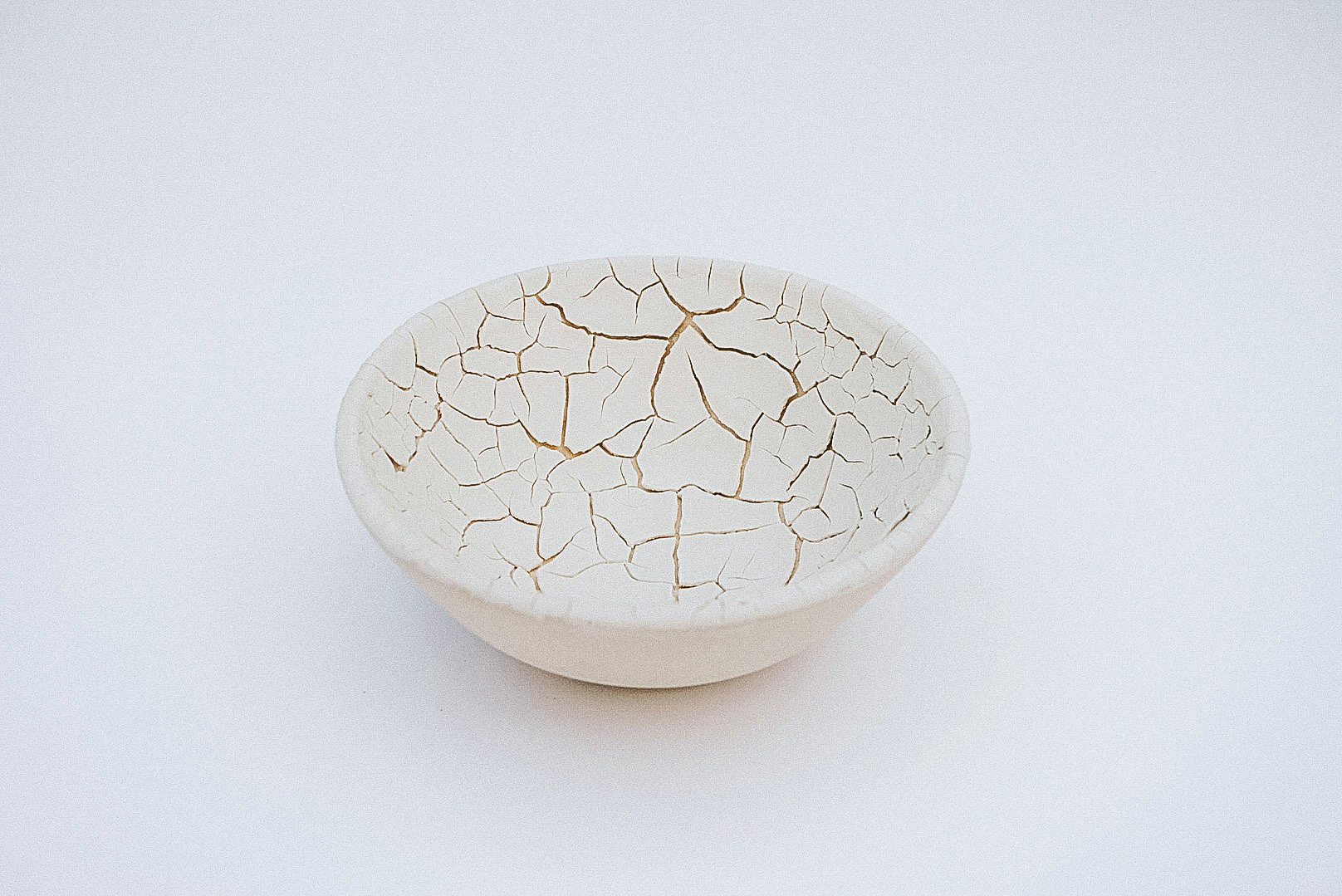

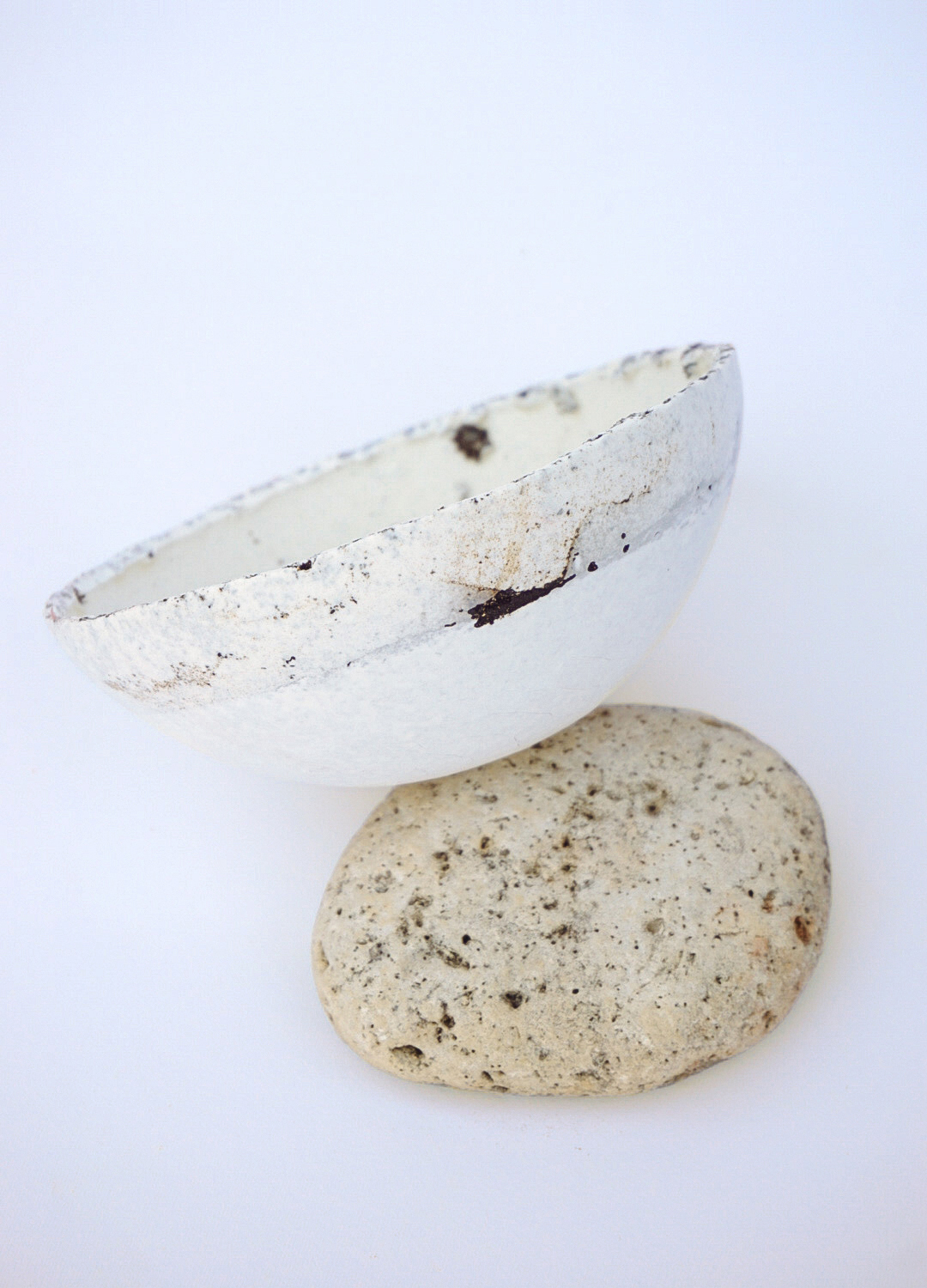


My vessels are full-bodied in shape and form. Colors and surfaces are inspired by makeup aesthetics. It is my gender-related commentary linked to a so-called truly “feminine touch” and a way to pay homage to the women who have gone unnamed in the world of ceramics. Every piece is an embodiment of something that I as a woman encounter in my daily routine dictated by gender socialization and hierarchies of a binary nature.
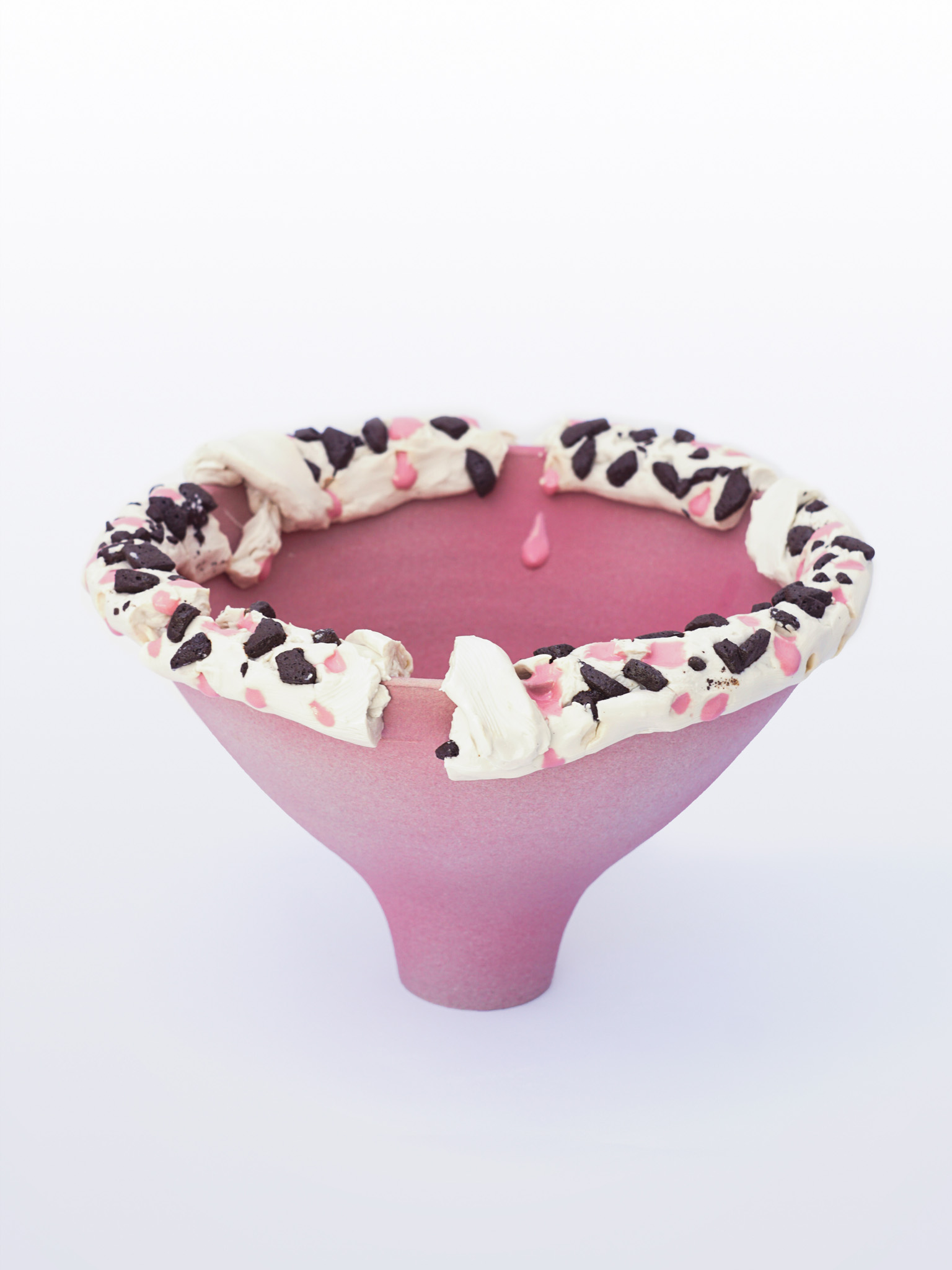
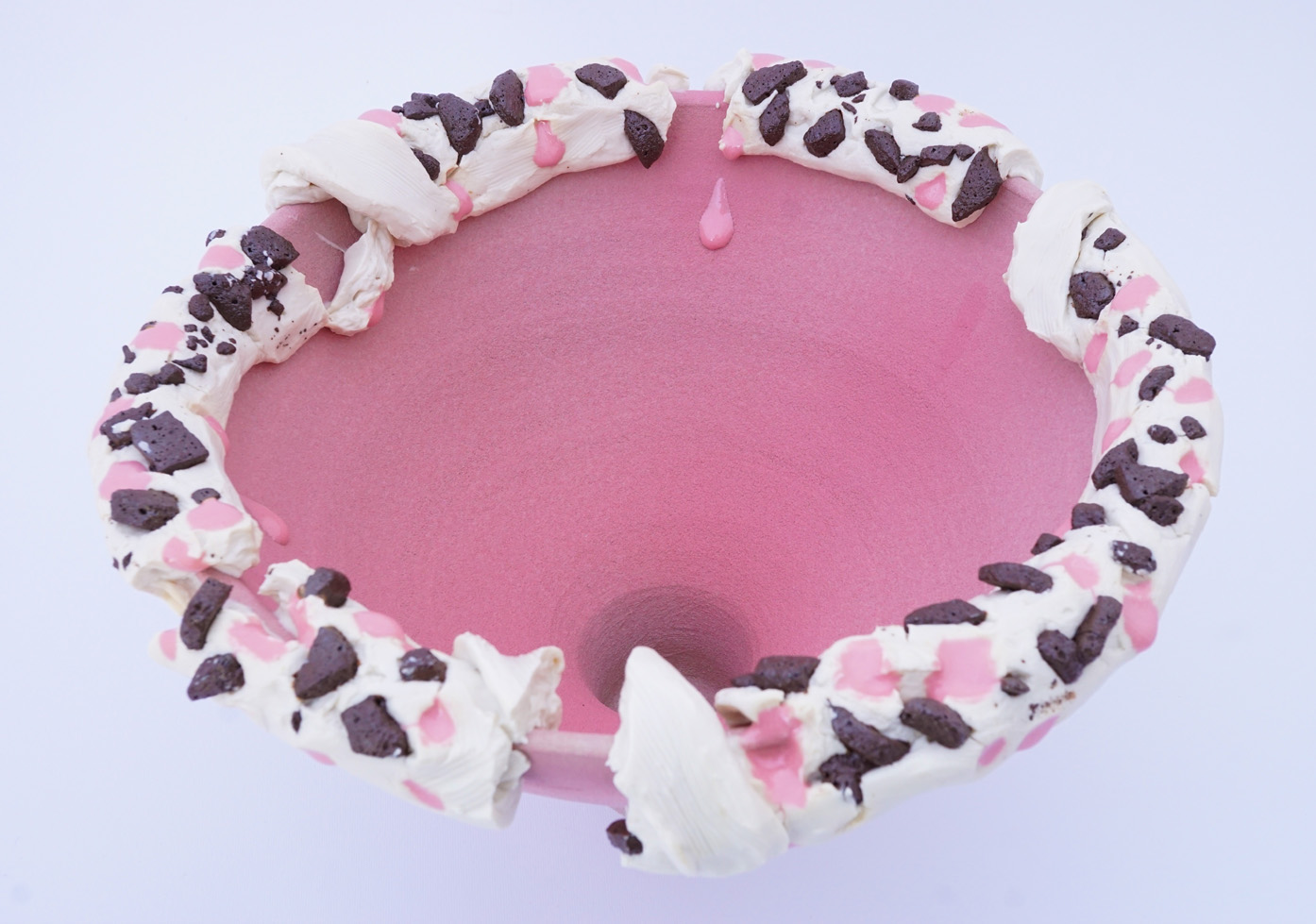
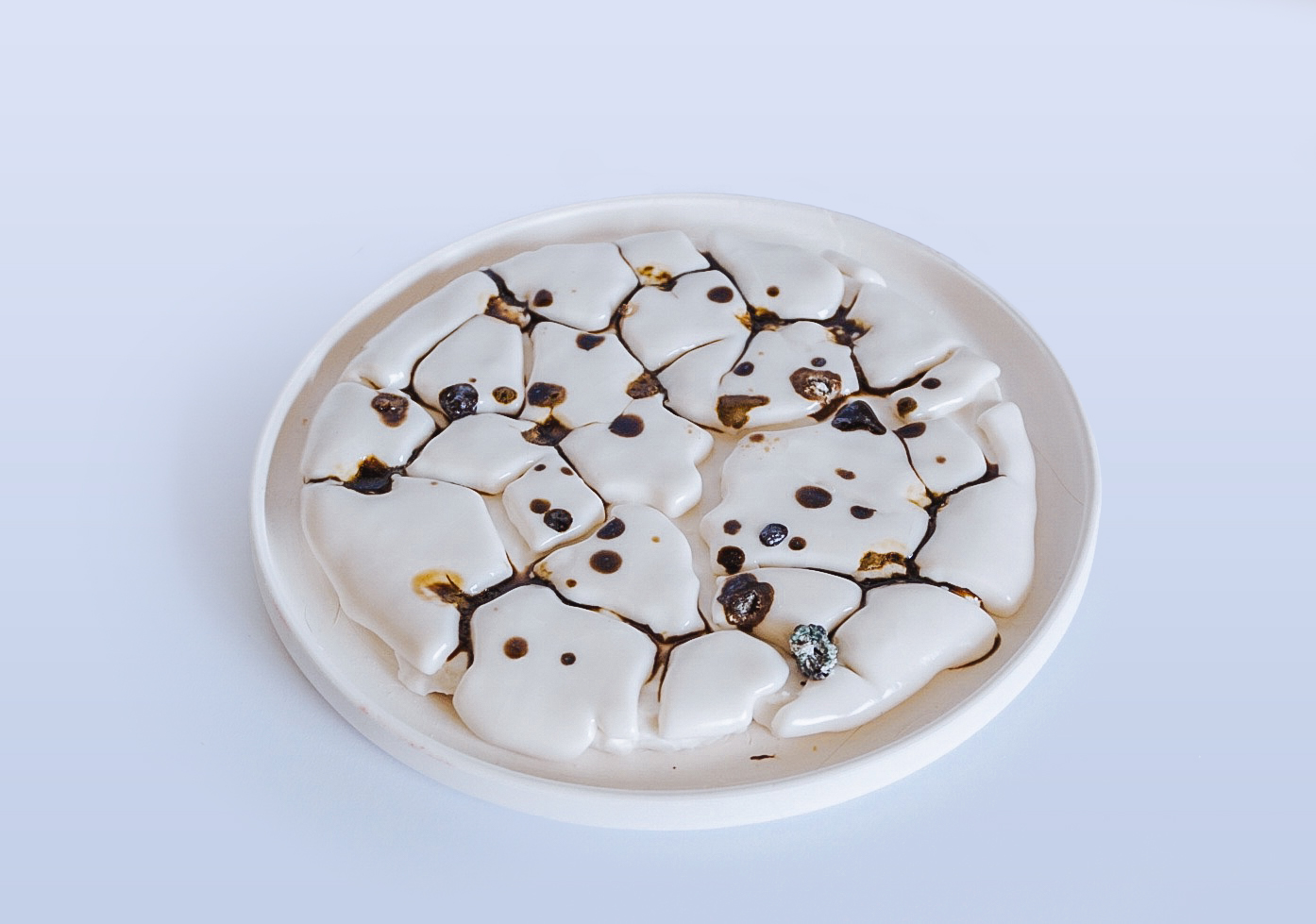
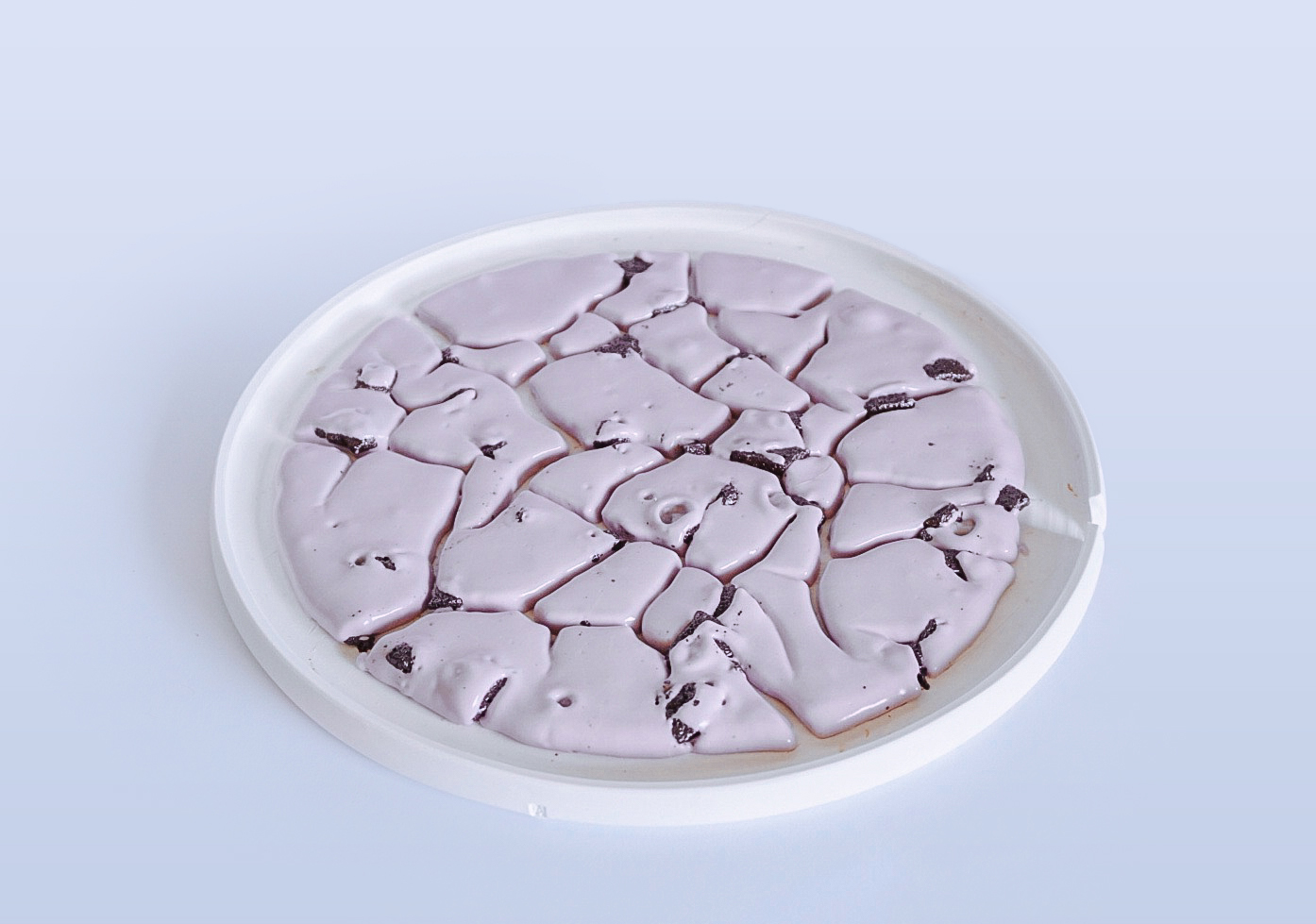

no name moodboard






Tranquility
Black and white stoneware, wild clay, rocks, ashes
H 8 cm, D 12 cm
Hamburg 2018
Black and white stoneware, wild clay, rocks, ashes
H 8 cm, D 12 cm
Hamburg 2018
The project “Tranquility” invites you on an aesthetic journey that appeals equally to eyes and hands, with works in which material and consciousness are experimentally interlinked.
“Tranquility” is a lot about perfect imperfection. Experimental ingredients applied layer by layer to the vessel body and often subjected to multiple firings up to 1300° C drive the material to its limits. Inspired by the concept of Wabi-Sabi, which shows how to find beauty in simplicity and not-so-perfect aspects.
It was exclusively made for the Japanese concept store Akiko in Hamburg.
Miró
Stoneware, glaze
Palma de Mallorca 2019
Stoneware, glaze
Palma de Mallorca 2019
My ceramics journey started with summer workshops at the Joan Miró Foundation in Mallorca. Here I learned slipcasting, firing in a gas kiln, working with porcelain and mixing glazes using recipes from Josep Artigas, a ceramicist who collaborated with Joan Miró in their ceramic works. Years later the circle was closed when I was invited to make a pottery collection for the newly open café at the Foundation. As a base I used the glaze number 640 from the Artigas glaze book and developed a color palette inspired by the typical Mallorquin colors such as a marés sandstone, pine green and the Mediterranean sea blue.
In the first two weeks of my residency I was wheel-throwing all the pieces of the collection. After well drying and sanding we did the first bisque firing in the Miró Foundation gas kiln at a temperature of 950°C.
Glazing was absolutely fun. I was inspired by Joan Miró's drawing technique by splashing or pouring the paint straight on the canvas using a bucket. I was lucky to glaze my work outside in the patio of the Son Boter workshop building, enjoying the same view Miró once had.
The second firing was up to 1280°C, it took around 12 hours to achieve the temperature and 12 hours more of cooling before opening the kiln and finally checking the result.

It was a big challenge for me to make this project happen in just 4 weeks during my residency time, but at the same time it was a big joy to breathe in the atmosphere of creation in the studios where Joan Miró lived and worked in his last years.